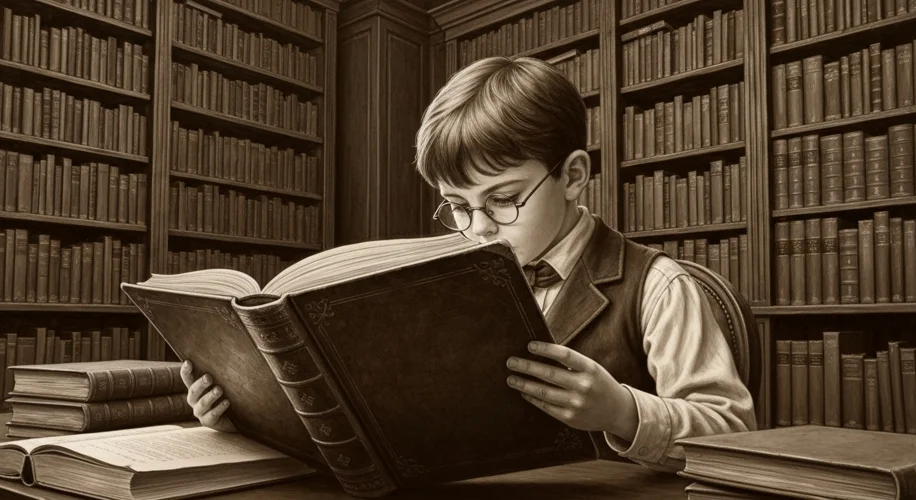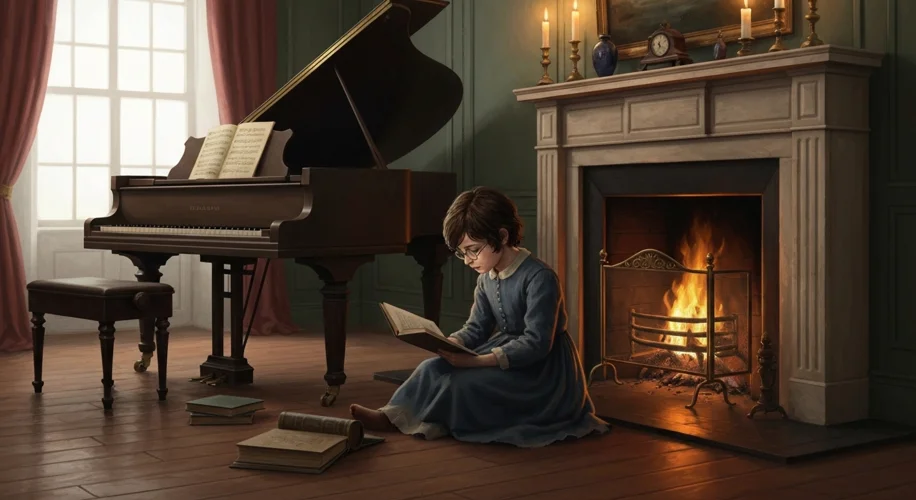In an age dominated by glowing screens and instant digital gratification, the term ‘iPad kid’ has become a ubiquitous descriptor for children seemingly lost in their tablet’s embrace. But this fascination with the solitary, intellectual child is hardly a new phenomenon. Long before the advent of portable technology, societies grappled with, and often quietly celebrated, the emergence of the ‘book kid’ – a child whose world revolved around the printed page, often to the bemusement, and sometimes the dismay, of those around them.
Imagine a scene from a bustling Victorian drawing-room. Amidst the chatter of polite society and the clinking of teacups, a young boy, perhaps eight or nine years old, is ensconced in a corner, utterly absorbed in a thick volume. His mother might sigh, nudging her neighbor, “Oh, look at little Arthur. He’s off in his own world again.” This wasn’t an uncommon sight. Children, especially those from more privileged backgrounds, often had access to books, and for some, reading became an all-consuming passion.

Historically, a child’s deep immersion in reading was often viewed through a dual lens. On one hand, it was a sign of intelligence, a promise of future scholarly or professional success. In the 18th and 19th centuries, education was increasingly valued, and a child who devoured books was seen as one who was diligently preparing for their adult life. The ability to read complex texts, engage with abstract ideas, and expand one’s knowledge base was a mark of distinction. Think of figures like John Stuart Mill, who was famously educated at home with an incredibly rigorous curriculum from a young age, his intellectual development prioritized above all else.
However, this intense focus on the inner world of books could also be a source of concern. The era placed a high value on social graces, outdoor activity, and the development of a well-rounded personality. A child who preferred the quiet solitude of reading to the boisterous games of their peers might be seen as ‘too serious,’ ‘squeamish,’ or even ‘unhealthy.’ There was a prevailing notion that excessive intellectual pursuit, especially in childhood, could lead to nervous disorders, physical frailty, or a detachment from the practicalities of the real world. Doctors and educators of the time sometimes warned against prolonged, solitary reading, advocating for a balance with physical exercise and social interaction.
The cultural context is crucial here. In many societies, childhood was not solely a period of play; it was also a preparatory stage for adult responsibilities. For boys destined for professions, academic achievement was paramount. For girls, while education was often geared towards domesticity, literacy and a cultivated mind were still considered desirable, albeit within certain social boundaries. The ‘bookish’ child, therefore, was both a potential asset and a potential problem.
Consider the popular literature of the time. Novels often featured young protagonists who found solace and adventure within the pages of books. These characters, though fictional, reflected a cultural understanding of childhood where reading could be a refuge from difficult circumstances or a gateway to imagination. Think of characters like Oliver Twist, whose early literacy offered a glimmer of hope amidst the squalor of the workhouse. While Dickens highlighted the systemic issues Oliver faced, the act of reading itself was presented as a virtuous pursuit.
Unlike today’s digital distractions, the printed book offered a singular, focused experience. There were no pop-up notifications, no hyperlinks to veer off course. A child engrossed in a novel or a history text was engaged in a deep, sustained act of concentration. This fostered patience, critical thinking, and a profound connection with the author’s narrative. The tactile experience of holding a book, turning its pages, and smelling its paper and ink created a unique sensory engagement that is quite different from the ephemeral nature of digital content.
The ‘book kid’ phenomenon, therefore, is a historical echo of our ongoing societal dialogue about childhood, education, and the balance between the inner and outer worlds. While the tools have changed dramatically – from leather-bound volumes to sleek tablets – the fundamental question remains: how do we nurture a child’s curiosity and intellect without isolating them from the world around them? The ‘book kids’ of yesteryear, much like the ‘iPad kids’ of today, represent a fascinating facet of human development, reminding us that the pursuit of knowledge, in any era, is a powerful, and sometimes complex, force in shaping young minds.

